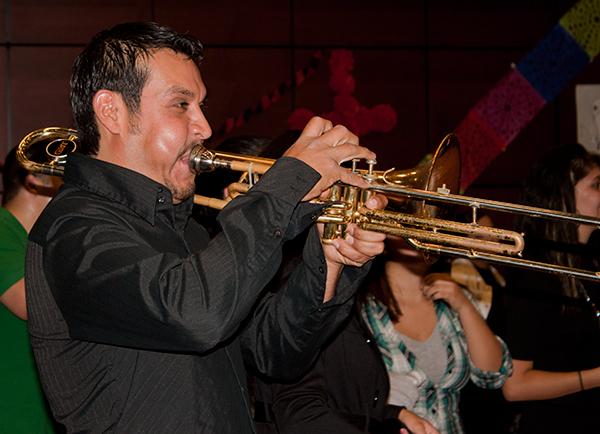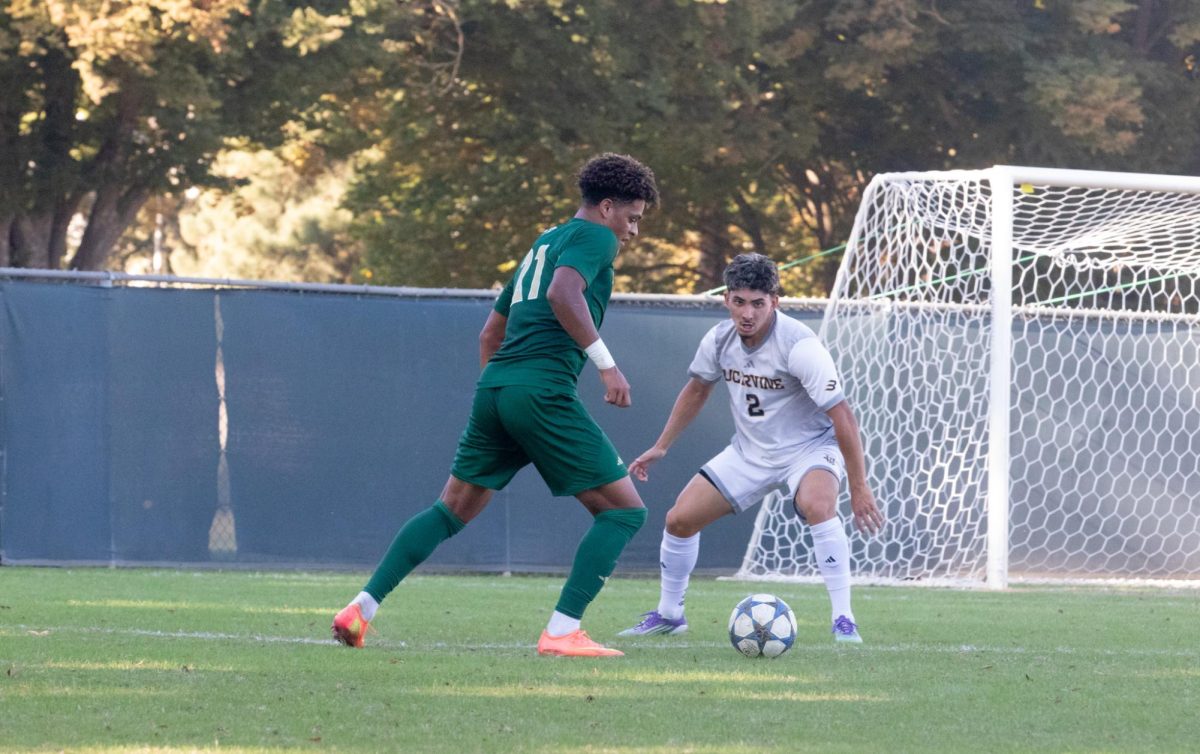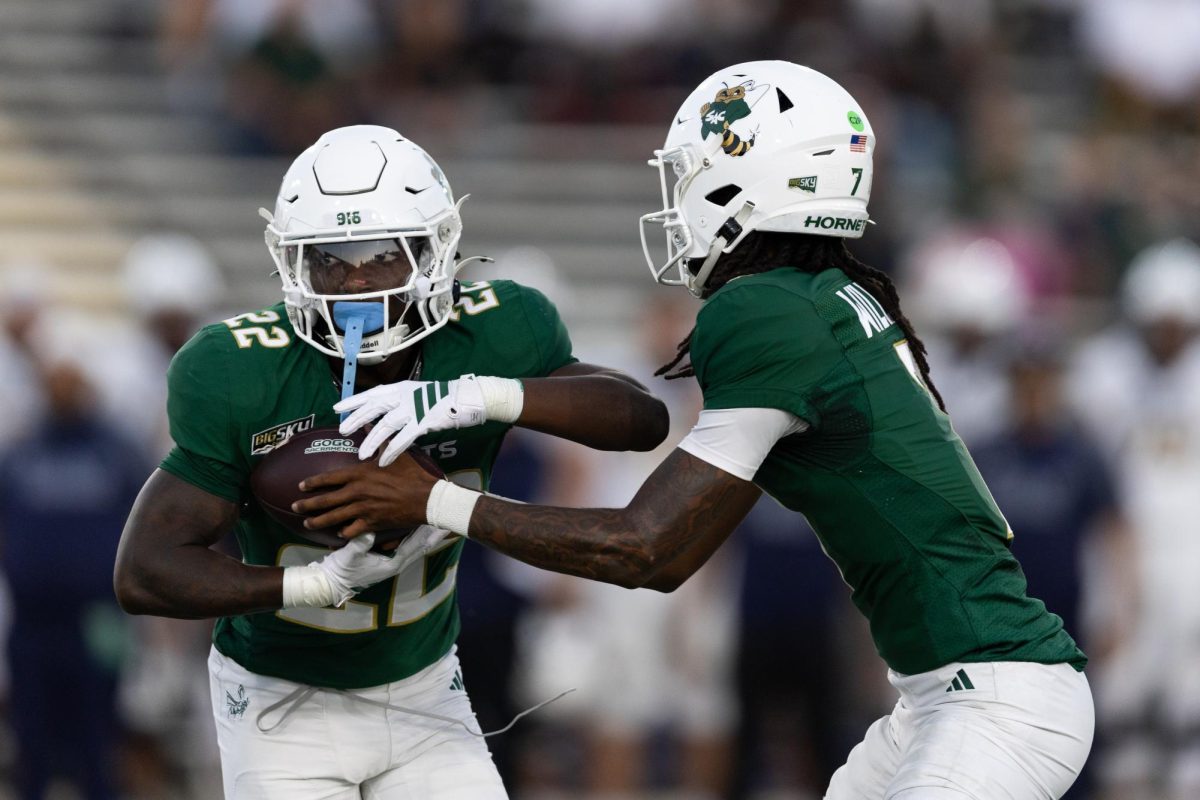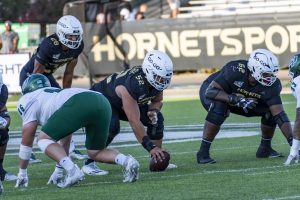Sac State celebrates Day of the Dead

Day of the Dead 2010 1:The Sigma Pi Alpha Sorority from Sacramento State University celebrated Dia De Los Muertos on Tuesday. It?s the Latino celebration of the dead. The crowd exploded when the band jumped in the celebration.:Daniel Ward – State Hornet
October 26, 2010
Through hands-on activities, altar-building and ethnic performances, about 300 Sacramento State students, faculty and staff celebrated the history of Dia De Los Muertos, a Latin-American holiday also known as Day of the Dead.
Sigma Pi Alpha, a Chicana and Latina sorority, hosted its 6th annual Dia De Los Muertos Monday in the University Union’s Redwood Room.
“(Dia Del Los Muertos) is a day that is reserved for commemorating and remembering your loved ones,” said Sandra Campos, senior psychology major and member of Sigma Pi Alpha Sorority. “It’s a day that has sentimental value to those who have lost someone in their lives. We want to show the community other celebrations rather than the ones celebrated by the media like Cinco de Mayo.”
The Day of the Dead is traditionally celebrated from Sunday to Tuesday. Sigma Pi Alpha usually hosts the event during the time when it is celebrated in Latin America, but room reservation conflicts moved the celebration at Sac State to a week early.
Day of the Dead is a popular celebration because Mexicans live alongside death. They embrace it, as shown in the three days spent celebrating death, said alumna Christine Shelby.
The Mesa Kinto Sol Aztec dancers, dressed in traditional Aztec clothing, began the night by dancing outside the Union, then leading the attendees into the Redwood Room. The dance was accompanied by sonaja, or shaker, drums, flutes and saxophones.
One of the dancers, Sacramento City College student Lizbeth Martinez said she enjoys the event because it reminds her of her Mexican roots. Martinez, who participated in the Day of the Dead celebration for the first time, moved to U.S. when she was 9 years old.
Following the Aztec dancers was a Mexican folk dancing group, Folkorico Latino de Woodland. Dressed in blue and white, the dancers performed Tamaulipas, a mixture of Irish and cowboy dancing.
Junior anthropology major Trenton Turner said the performers were his favorite part of the event because of their traditional dances and colorful costumes.
Dia De Los Muertos is represented by skulls and, to stay with tradition, some students participated in sugar skull decorating, while others painted their faces white with black circles.
Teresa Lerma, graduate student in educational leadership public policy, said she had her face painted to recognize both the living and the dead.
“To honor are loved one,” Lerma said.
Other traditions in Latin-American countries include decorating cemeteries while taking the time to think back about loved ones, Campos said. People also celebrate by creating altars surrounding with candles, incense, pictures of and favorite food of the person who died.
“Incense and candles are a traditional item to have,” Campos said. “Some people believe the candles are the way to the other side; the incense guides them with the sense of smell and purify the area around the altar and keep bad spirits away.”
Participating clubs and organizations each created an altar with candles, incense, pictures and food, depending on how closely they want to stick to tradition. A total of 13 altars were created for the event.
Sigma Pi Alpha and Lambda Theta Nu both created an altar to commemorate their members’ loved ones.
“We all came together and made it one,” said alumna and Sigma Pi Alpha member Karina Menjivar.
Sigma Pi Alpha’s alter included water for the spirits to drink from and soap for the spirits to wash their hands with after eating the bread left for them.
Lambda Theta Nu’s alter was decorated with candles, bread and tamales. Senior communication studies major Alicia Mata said the candles allow for the spirits to see the light, while the bread and tamales are the favorite food of those who have died.
While some altars focused on multiple people, others focused on one individual. The organization Movimiento Estudiantil Chicano de Aztlan created an altar to commemorate Joe L. Wrightsman, who died in September in Afghanistan.
The altar was decorated with a U.S. and a Marine Corps flag, along with apples, bananas, peanuts and bread.
In previous years, some altars were created to commemorate breast cancer, 9/11 and car accident victims, Campos said.
Alumna Christine Shelby said the Day of the Dead is a way to say thank you to those who came before them.
“This is an event that Sigma Pi Alpha Sorority is really proud of and we hope this is something people really enjoy and that they walk out with a good impression and learn something new from another culture,” Campos said.
Michelle Curtis can be reached at [email protected].
























































































































